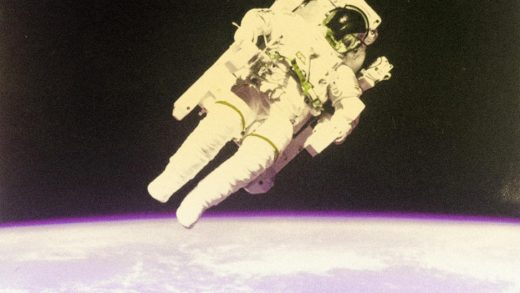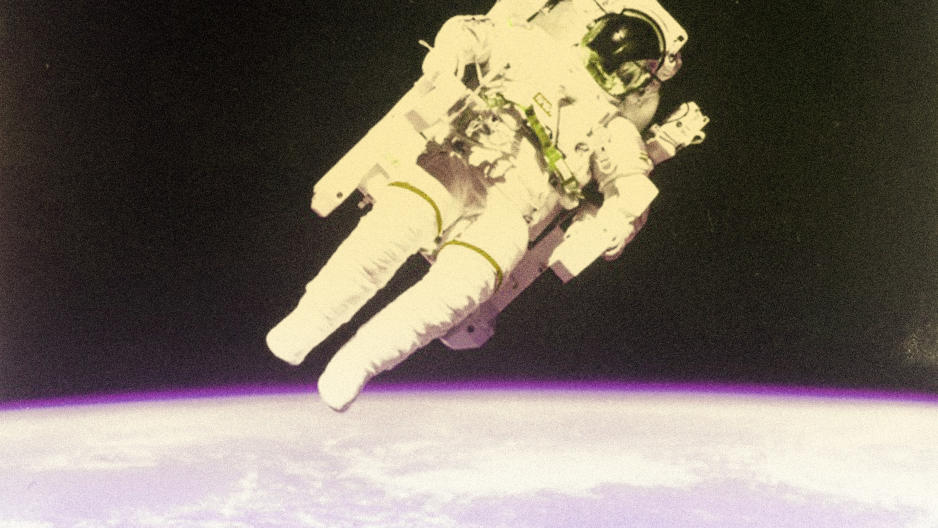Four Out-Of-This-World Predictions For The Space Industry In 2017
There was a time when NASA was singlehandedly driving America’s dream of exploring outer space. But that has changed over the last 15 years. A slew of private space companies have entered the market with ambitious plans to build rockets and colonize new planets. SpaceX, Virgin Galactic, Blue Origin—each led by well-known entrepreneurs—have become household names.
But over the last seven years, hundreds of smaller startups have also popped up, each trying to accomplish something different in the new space race. Astrobotic, for instance, has launched a lunar delivery service, charging $1.2 million per kilo to take anything you want to the moon. World View is developing enormous balloons that can take passengers or equipment to the very outer reaches of our atmosphere. Saber Aeronautics is using video game technology to help people create missions and operate satellites with little training.
Chad Anderson has seen these exciting new developments firsthand as the CEO of the Space Angels Network, an organization that surveys and invests in emerging space startups. It began tracking private space companies in 2009, when SpaceX had its first successful launch, and he says that VC investments in private space companies have been on an upward trajectory every year. (This does not include infusions of corporate capital, such as Google’s $1 billion investment in SpaceX last year.) He says that seven years ago, there were fewer than 50 private space companies, but this year, the number has grown to almost 200 that have received non-government funding to execute their business plan.
“There’s a robust ecosystem in the space industry now,” he says. “In the past, the government would have been a space company’s customer. Now they might have the government as a customer for some of their data, but other private customers as well. Then they might buy parts from another space company.”
I sat down with Anderson to discuss some of the big trends that he believes will take off next year.
Governments Play A Bigger Role
While the private space industry is booming, government still has an important role to play in driving space-age technology forward. Space startups often build on primary research that began at NASA, and many also rely on the government to be a customer. “The exploratory science that NASA is doing translates to private-sector activity eventually,” Anderson says.
The good news is that Congress appears to be in favor of giving NASA the resources it needs to thrive. It received a $19.3 billion budget in 2016, a nearly $1.3 billion increase from the year before. It is unclear how the Trump Administration will handle NASA. So far, the president-elect has said very little about his plans for the country’s space program, and it is unclear whether his pro-business policies will play out in the space sector. “If it comes at the expense of investing in the longer term gain, his pro-business approach could be harmful,” Anderson says.
What we do know is that there’s growing interest from governments around the world in investing in space. This year, Luxembourg’s government invested $227 million in asteroid mining research, which included funds that went to two American companies—Deep Space Industries and Planetary Resources—that would create European operations.
Meanwhile, the Japanese Aerospace Exploration Agency invested $290 million on a probe to orbit Venus, and China’s president announced a plan to land “taikonauts” on the moon by 2036 and Mars thereafter. Both countries say these space missions are designed to boost the local economy and spur innovation in robotics, aviation, and AI.
Anderson says we can look forward to more private-public partnerships in the future as governments realize the value of investing in space. All of this will be a boon to the space startup community. “The government has a big role to play as a customer,” he says. “It’s good to see more agencies, in more countries, interested.”
We’ll Figure Out Intergalactic Property Rights
The Outer Space Treaty, which was first signed in 1967, is still the basis of international space law. It was developed right before the U.S. went to the moon and stated, among other things, that no country could place a weapon of mass destruction in orbit in outer space or claim any celestial resource. “It’s a different time in space now from back then,” Anderson says.
Many within the private space industry are lobbying to modify the treaty to allow companies to claim some portion of what they mine or discover on a space mission. “What is the incentive to invest private capital and take on so much risk by going to space if you don’t even know if you have any claim to resources once you get there?” Anderson says. “This creates that incentive.”
He says that one model for a new treaty could be the Homestead Acts of 1866, which the U.S. government created to entice Americans to settle in less inhabited parts of the country, mostly in the West. The law gave applicants ownership of land at little or no cost, which led to more than 270 million acres of public land given to 1.6 million people. By creating similar legislation for the ownership of property in space, many in the private space industry believe more people will be willing to invest in the technological infrastructure to get there.
Space Tourism Will Attract More People
Right now, the idea of space tourism appeals to a small, self-selecting group of people who love the idea of space so much that they are willing to take on the many risks of being among the first private citizens to go to space.
But this is slowly changing. At the National Aerospace Training and Research Center in Pennsylvania, scientists have been trying to understand who can actually withstand the physical stress of flying on a Virgin Galactic rocket, for instance. They’re finding that even very old people or people with pins in their bodies after surgery can handle the gravitational pressures and exertion.
As space tourism becomes less pie-in-the-sky fantasy and more concrete reality, and as more people begin to seriously prepare for space flight, the whole concept will seem less daunting. This might even begin happening as early as next year. Again, Anderson compares the voyage to space to the early days of traveling out West. “At first it took a very special kind of person to leave their families and go off with a shovel and a wheelbarrow,” he says. “But once they had developed a train to go out there, a different demographic started traveling. We’ve seen this scenario play out multiple times over history, and I don’t see how this will be any different.”
More Launches
Anderson says that 2017 will be exciting for launches. Blue Origin is planning to start sending trained astronauts next year, and paying commercial passengers the following year. Rocket Lab is set to begin test flights on its Electron small satellite launch vehicle in 2017 as well. There are many other companies depending on these launches to get their satellites and instruments to space. “Even one new launch system will do a lot to relieve the pressure and backlog we have at the moment,” Anderson says.
In the past, companies relied on NASA’s much bigger launchers to get to space, but companies like Rocket Lab are testing out smaller launch vehicles. While the price of a payload is about the same on either type of vehicle, smaller vehicles tend to be able to launch more frequently and can have smaller customers. “What they are selling you is the opportunity to be the primary payload,” Anderson says. “If the launch is delayed, it is because you were delayed, not because the primary payload you were flying with was delayed. It will take you to the orbit you want to go to, whereas if you ride as the secondary payload you are likely going to another orbit and must figure out how to get to where you wanted to go.”
The moon will continue to be the destination of choice for these spacecraft. While a lot of attention has been paid to NASA and SpaceX’s plans to go to Mars, a growing number of companies are working on lunar missions. Astrobotic, for instance, is partnering with a range of organizations—from scientific groups to companies who want to use a lunar landing as part of a marketing campaign—to deliver equipment and materials to the moon. Others are thinking about using the moon as a staging area or a launch site for travel to other parts of our solar system.
All of this extraterrestrial activity is causing concern about the trail of orbital debris that might be left behind. Space law requires companies to clean up after themselves, so expect more of them to invest in creating enormous harpoons that pull trash down from space. There will also be an increase in technologies that help us track where objects are in space.
Next year should bring lots of new developments. But there is an infinite area to explore beyond our planet, so there’s a lot left to do. “Space is a long game,” says Anderson.
Fast Company , Read Full Story
(47)



